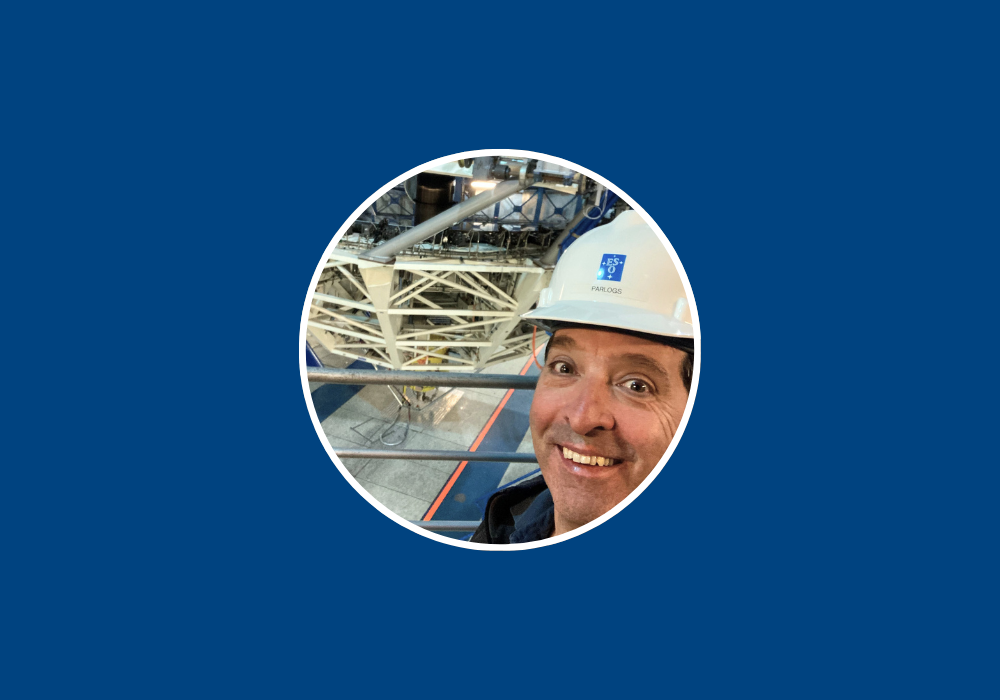
Date.
- Can you briefly present yourself, and your work in general?
My research activity over the last 30 years has always progressed along two main tracks:
- scientific “observational” research, aimed at the study of active galactic nuclei (AGN), particularly the study of their high energy emission coming from the innermost regions of their host galaxies, close to the host supermassive black hole;
- “instrumental” research aimed at the study of high energy instrumentation and at the definition and proposals for future missions/observatories from space and/or from the ground.
Since 2017, when I’ve been appointed head of the National High Energy Astrophysics Division (so-called “UTG-III”) of the INAF Scientific Directorate, my main activity has become mostly managerial (but building on my scientific and instrumental expertise) and has been more or less equally distributed between activities for high energy projects from space (such as Athena/X-IFU and the coordination of the X-IFU Science Advisory Team (XSAT)), and from the ground (such as CTAO and CTA+ and the coordination and support of the major INAF contributions to the SST and LST consortia).
- Can you tell us about your career as an astrophysicist?
I was born in Switzerland and raised in France, but I am Italian. My parents left Italy for Switzerland 55 years ago as part of the ramping-up of the scientific staff at CERN. So, I have to say that I am a “child of art”. However, I never felt that I would live in Switzerland forever, nor was I particularly attracted by particle physics (although I was impressed by CERN, its labs, its outstanding researchers from worldwide, its mission…). Instead, I became fascinated by astrophysics, of course by listening to and discussing it with my father, but especially after reading the fascinating books by Hubert Reeves. I knew that I wanted to do astrophysics since I was 12-13 years old, but I honestly never thought that I would ever be able to become an astrophysicist. Luckily, I managed to graduate in astronomy in Bologna in the early 90s and was lucky again to be offered an EU grant to go to Japan to analyze the new X-ray data from ASCA, and then had the honor a few years later to obtain a PhD in astrophysics from Saitama University/RIKEN (Tokyo). The Japanese period was a fundamental decision and milestone in my career, which I would never have passed without the support and advice of my mentor, the late Prof. Giorgio Palumbo, a great high-energy astrophysicist and professor at the University of Bologna. I then got post-doctoral contracts for a few years all over the world, e.g. in the US to work with Chandra and test its software, then in the EU (Germany, France and then Italy) to work mainly with XMM-Newton and BeppoSAX. All in all, I think I’ve been very lucky to become an astrophysicist, as it has allowed me to have great scientific emotions, e.g. when analyzing new data and making new discoveries to publish in international journals, to meet great scientists and colleagues, and to travel around the world for work and conferences (unfortunately, this is no longer sustainable). The key to my career and my motto to the youngest students and researchers: “Follow the data”, because that’s where the discoveries are made, that’s where the excitement is, that’s where knowledge is improved, that’s where you’re seen as “necessary and expert” by others, and that’s where you’ll inevitably progress in your career.
- Can you tell us about your role in the X-IFU project?
After being a member of the XEUS Astrophysics Working Group for many years, I was nominated by ESA to be a member of the Athena Science Study Team. As such, I have participated on several occasions in defining the scientific characteristics of XEUS/IXO/Athena. In the last CV selection, which led to the approval of Athena as an L2 mission for 2028, then postponed to 2037, I was co-author and working group chair for the Athena+ White Paper (Nandra et al. 2013), co-author of the Athena mission proposal and member of the Athena Science Study Team, and co-chair of the Science Working Group “The Energetic Universe”. Since 2017, I have been appointed chair of the X-IFU Science Advisory Team (XSAT), and as such I am also part (in attendance) of the X-IFU Consortium Management Team (XCMT), which meets weekly. In my role as chair of the XSAT, I must coordinate the XSAT team, which is responsible for the following activities:
- provide scientific advice and support to the X-IFU PI on all scientific matters relevant to the instrument and its development;
- assess the impact on the scientific capabilities of the X-IFU of potential changes in instrument performance parameters or instrument design;
- assist the X-IFU instrument scientist and the X-IFU system manager in translating the X-IFU related newAthena science requirements into X-IFU instrument specifications;
- help to optimize the X-IFU science return, stimulating and promoting X-IFU science internally and externally;
- organize (with vice-chair Etienne Pointecouteau) the agenda and pace of the XSAT meetings (currently monthly) and reporting to the Consortium meetings.
All these activities have required, and still require, considerable effort in terms of present and future scientific vision, as well as in-depth knowledge of present and future instrumental capabilities.
- What are your views on the role of the NewAthena X-IFU in our future understanding of the universe?
Taken literally, this is a very difficult question to answer, because our experience teaches us that the greatest discoveries made by major observatories (such as HST, Chandra or XMM-Newton, and X-IFU will not be an exception) have little to do with the planned/proposed scientific reasons for which they were originally built. There are at least two fundamental reasons for this:
- observatories have their schedule based on a proposal process involving new ideas and proposals, the final “discovery output” of which (by definition) is difficult or impossible to predict today;
- great instruments like X-IFU offer such a large leap in sensitivity and performance (compared to the existing or even planned instrument) over several parameter space (such as sensitivity to emission/absorption line detections, capabilities in spatially resolved spectral analysis, throughput combined with energy resolution between a broad range of energies 0.1-10 keV, etc.), it is very difficult today to predict the final use and the discoveries that will be made with such improved instruments. I think that the real guarantee of the scientific discovery power of an observatory is indeed to provide a major advance (of at least one order of magnitude) in performance together with open (but competitive) access to its data.
Nevertheless, the whole NewAthena/X-IFU mission is based on the definition of a general, multi-purpose science case and objectives which, given the specified performances, will certainly guarantee outstanding discoveries in the field of the hot and energetic Universe in, e.g., mapping the detailed interactions and feedback of AGNs in galaxy clusters, as well as probing ultra-fast outflows in nearby and distant QSOs, or the intergalactic medium along the line of sight of high-z (>7) GRBs, or contributing to the newly born multi-messenger and/or transient sky.
Let’s carefully follow the XRISM results today, as these will surely be the pathfinders for our future NewAthena/X-IFU new science case, and let’s wait for them before tentatively answering this question but remembering that only X-IFU will tell us, at the end.


 Youtube
Youtube